Energy
Dig, Baby, Dig: Making Coal Great Again. A Convincing Case for Coal
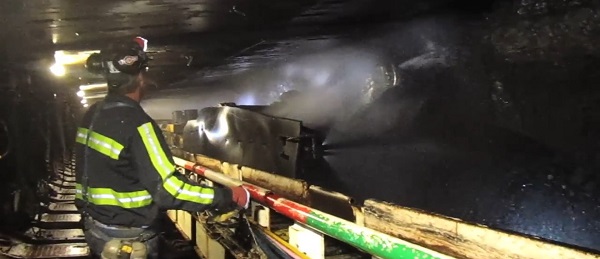

From the Daily Caller News Foundation
By Gordon Tomb
Has the time come to make coal great again? Maybe.
“Coal is cheap and far less profitable to export than to burn domestically. so, let’s burn it here,” says Steve Milloy, a veteran observer of the energy industry who served on the Environmental Protection Agency (EPA) transition team for the first Trump administration. “It will provide an abundance of affordable and reliable electricity while helping coal communities thrive for the long term.”
The U.S. coal industry has been in a long decline since at least President Barack Obama’s regulatory “war on coal” initiated 15 years ago. At the same time, natural gas became more competitive with coal as a power-plant fuel when new hydrofracturing techniques lowered the price of the former.
In Pennsylvania, a state with prodigious amounts of both fuels, natural gas has all but replaced coal for electric generation. Between 2001 and 2021, gas’ share of power production rose from 2% to 52% as coal’s dropped from 57% to 12%, according to the U.S. Energy Information Administration. Last year, Pennsylvania’s largest coal-fired power plant shut down under the pressures of regulations and economics after spending nearly $1 billion on pollution controls in the preceding decade.
Nationally, between 2013 and 2023, domestic coal production declined by more than 30% and industry employment by more than 40%.
While the first Trump administration provided somewhat of a respite from federal hostility toward fossil fuels in general and coal in particular, President Joe Biden revived Obama’s viciously negative stance on hydrocarbons while promoting weather-dependent wind and solar energy. This absurdity has wrecked livelihoods and made the power grid more prone to blackouts.
Fortunately, the second Trump administration will be exponentially more friendly toward development of fossil fuels. High on the list is increasing exports of liquefied natural gas (LNG). “[T]he next four years could prime the liquefied natural gas (LNG) markets for a golden era,” says market analyst Rystad Energy. “[T]he returning president’s expected policies are likely to accelerate U.S. LNG infrastructure expansion through deregulation and faster permitting…”
All of which is in line with Milloy’s formulation of energy policy. We should “export our gas to Europe and Asia, places that will pay six times more than it sells for in the U.S.” says Milloy, publisher of JunkScience.com and author of books on regulatory overreach, fearmongering and corruption. “Let’s reopen mothballed coal plants, build new coal plants…”
Accompanying rising expectations of easing regulatory obstacles for natural gas is hope that coal can clear daunting environmental hurdles put in place by “green” zealots.
For one thing, the obnoxiously irrational EPA rule defining carbon dioxide — a byproduct of combustion — as a pollutant is destined for the dustbin of destructive policy as common sense and honest science are reestablished among regulators.
Moreover, clean-coal technology makes the burning of the fuel, well, clean. China and India have more than 100 ultra-super critical coal-fired plants that employ high pressures and temperatures to achieve extraordinary efficiencies and minimal pollution. Yet, the United States, which originated the technology more than a decade ago, has only one such facility — the John W. Turk plant in Arkansas.
The point is the United States is underutilizing both coal and the best technology for its use. At the current rate of consumption, the nation’s 250 billion tons of recoverable coal is enough for more than 200 years.
So, if more natural gas winds up being exported as LNG at higher prices, might not coal be an economical — and logical — alternative?
Nuclear power is another possibility, but not for a while. Even with a crash development program and political will aplenty, it is likely to take decades for nuclear reactors to be deployed sufficiently to carry the bulk of the nation’s power load. Barriers range from the need to sort out competing nuclear technologies to regulatory lethargy —if not misfeasance — to financing needs in the many billions and a dearth of qualified engineers.
The last big U.S. reactors to go into operation — units 3 and 4 of Georgia Power’s Vogtle plant — took more than a decade to build and went $17 billion over budget.
“The regulatory environment is better, but it still costs too much and takes too long to get new reactors approved,” writes long-time nuclear enthusiast Robert Bryce.
Can anybody say, “Dig, baby, dig?”
Gordon Tomb is a senior advisor with the CO2 Coalition, Fairfax, Virginia, and once drove coal trucks.
Business
Senator wants to torpedo Canada’s oil and gas industry
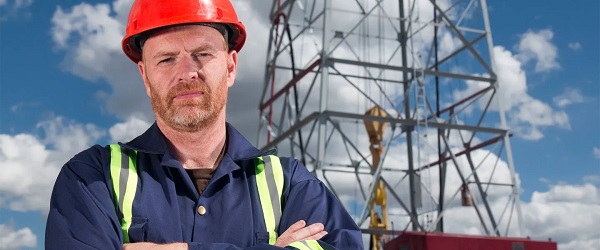
From the Fraser Institute
Recently, without much fanfare, Senator Rosa Galvez re-pitched a piece of legislation that died on the vine when former prime minister Justin Trudeau prorogued Parliament in January. Her “Climate-Aligned Finance Act” (CAFA), which would basically bring a form of BDS (Boycott, Divestment, and Sanctions) to Canada’s oil and gas sector, would much better be left in its current legislative oblivion.
CAFA would essentially treat Canada’s oil and gas sector like an enemy of the state—a state, in Senator Galvez’ view, where all values are subordinate to greenhouse gas emission control. Think I’m kidding? Per CAFA, alignment with national climate commitments means that everyone engaged in federal investment in “emission intensive activities [read, the entire oil and gas sector] must give precedence to that duty over all other duties and obligations of office, and, for that purpose, ensuring the entity is in alignment with climate commitments is deemed to be a superseding matter of public interest.”
In plain English, CAFA would require anyone involved in federal financing (or federally-regulated financing) of the oil and gas sector to divest their Canadian federal investments in the oil and gas sector. And the government would sanction those who argue against it.
There’s another disturbing component to CAFA—in short, it stacks investment decision-making boards. CAFA requires at least one board member of every federally-regulated financial institution to have “climate expertise.” How is “climate expertise” defined? CAFA says it includes people with experience in climate science, social science, Indgineuous “ways of knowing,” and people who have “acute lived experience related to the physical or economic damages of climate change.” (Stacking advisory boards like this, by the way, is a great way to build public distrust in governmental advisory boards, which, in our post-COVID world, is probably not all that high. Might want to rethink this, senator.)
Clearly, Senator Galvez’ CAFA is draconian public policy dressed up in drab finance-speak camouflage. But here’s what it would do. By making federal investment off-limits to oil and gas companies, it would quickly put negative pressure on investment from both national and international investors, effectively starving the sector for capital. After all, if a company’s activities are anathema to its own federal regulators or investment organs, and are statutorily prohibited from even verbally defending such investments, who in their right minds would want to invest?
And that is the BDS of CAFA. In so many words, it calls on the Canadian federal government to boycott, divest from, and sanction Canada’s oil and gas sector—which powers our country, produces a huge share of our exports, and employs people from coast to coast. Senator Galvez would like to see her Climate-Aligned Finance Act (CAFA) resurrected by the Carney government, whose energy policy to-date has been less than crystal clear. But for the sake of Canadians, it should stay dead.
Energy
Who put the energy illiterate in charge?
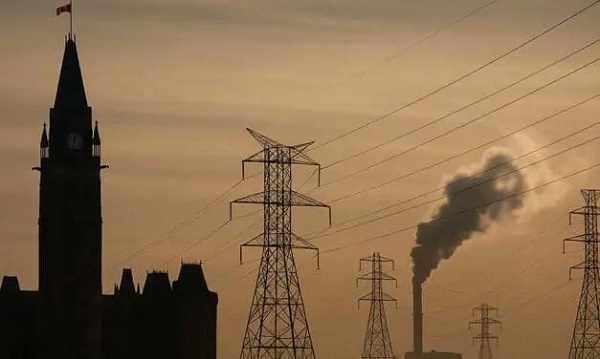
This article supplied by Troy Media.
Canada’s energy policy is being shaped by politicians who don’t actually understand how energy works. That’s not just embarrassing. It’s dangerous
Canada’s energy future is being held back by a critical obstacle: our elected officials don’t understand energy.
At all three levels of government, most politicians lack even a basic grasp of how our energy systems function. That ignorance isn’t just a knowledge gap—it’s a leadership crisis. Energy systems are evolving rapidly, and our leaders are ill-equipped to manage the complexity, tradeoffs and consequences involved. With few exceptions, their understanding is superficial, shaped more by talking points than substance.
By “energy systems,” I mean the complex web of technologies, infrastructure, markets and regulations that generate, distribute and manage power—from oil and gas to hydro, nuclear, wind and solar. These systems are deeply interconnected, constantly changing and central to every aspect of modern life. Yet the people making decisions about them often have little idea how they actually work.
This shows up frequently in public life: dodged questions, scripted answers, vague platitudes. Many politicians skate across the surface of issues with the thinnest understanding. The old adage “a little knowledge is a dangerous thing” perfectly describes Canadian energy politics today.
Decisions about energy directly affect household utility bills, climate goals, industrial competitiveness and grid reliability. Yet politicians tend to be tethered to the dominant energy source in their own region—oil and gas in Alberta, hydro in Quebec, nuclear in Ontario—without grasping how those systems connect or conflict. Canada’s energy landscape is fragmented, with each province operating under its own regulatory framework, infrastructure constraints and political pressures. That makes coordination difficult and systems-level thinking essential.
This isn’t a left-versus-right issue. It’s not oil and gas versus renewables. It’s a national failure to understand the integrated systems that power our lives and economy. Canada is, functionally, energy illiterate, and our elected officials reflect that reality. We flip a switch, pump gas, turn up the thermostat and rarely ask how or why it works, or what it costs in environmental or economic terms.
Take the Clean Electricity Regulations as one example. Introduced by the federal government to drive Canada’s electricity grid to net-zero emissions by 2035, the CERs require provinces to sharply reduce or eliminate fossil fuel-based power. But in Alberta and Saskatchewan, where coal and natural gas still dominate, those regulations landed with a thud. The federal government failed to account for regional infrastructure limitations, market structure
differences and technology readiness. The result? Immediate backlash, legal threats and political gridlock—not because climate action is unwelcome, but because the policy was crafted in a vacuum of systems-level understanding.
Adding to the problem is the dominance of bureaucrats and political handlers in shaping what passes for energy messaging. Speeches are often a patchwork of statistics and sanitized clichés, stripped of nuance or depth. Many politicians simply deliver what they’re handed, guided more by risk management than insight. The result is policy that’s disconnected from the realities it aims to change.
A handful of elected officials do have real-world energy experience, but even that is often narrow, based on one role or one sector. It rarely translates into the kind of broad, integrated knowledge needed to lead across multiple interdependent systems. The risks of this fragmented thinking are immense.
What’s needed is mandatory education—an energy information and insights toolkit for anyone seeking public office. This shared curriculum would cover how electricity and fuel systems work, the economics of energy markets, climate dynamics, environmental trade-offs and public policy principles. It should be grounded in both natural and social sciences and structured to develop systems thinking, so that decisions are informed by how energy technologies, markets and governance truly interact.
Imagine if thousands of politicians—urban and rural, left and right, federal and local—learned from the same textbook. Politics wouldn’t vanish. Disagreements wouldn’t disappear. But the debate would shift from tribal talking points to informed discussion.
And for once, Canada might start moving forward on energy, not with noise or paralysis, but with purpose.
Bill Whitelaw is a director and advisor to many industry boards, including the Canadian Society for Evolving Energy, which he chairs. He speaks and comments frequently on the subjects of social licence, innovation and technology, and energy supply networks.
Troy Media empowers Canadian community news outlets by providing independent, insightful analysis and commentary. Our mission is to support local media in helping Canadians stay informed and engaged by delivering reliable content that strengthens community connections and deepens understanding across the country.
-

 espionage1 day ago
espionage1 day agoFrom Sidewinder to P.E.I.: Are Canada’s Political Elites Benefiting from Beijing’s Real Estate Reach?
-

 Business2 days ago
Business2 days agoCanada’s critical minerals are key to negotiating with Trump
-
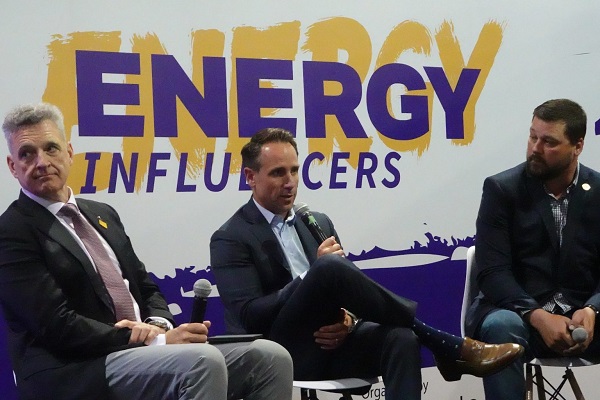
 Alberta1 day ago
Alberta1 day agoAlberta’s carbon diet – how to lose megatonnes in just three short decades
-

 Energy1 day ago
Energy1 day agoWho put the energy illiterate in charge?
-
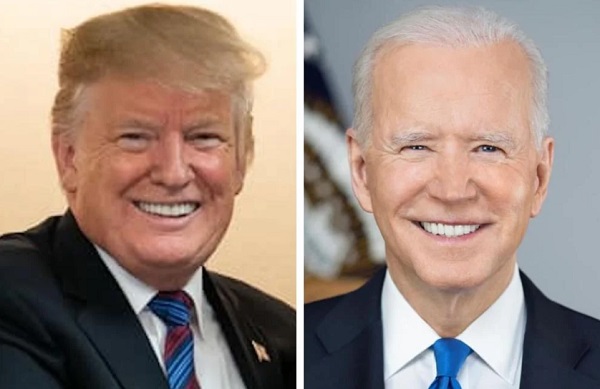
 espionage1 day ago
espionage1 day agoFBI Buried ‘Warning’ Intel on CCP Plot to Elect Biden Using TikTok, Fake IDs, CCP Sympathizers and PRC Students—Grassley Probes Withdrawal
-

 David Clinton1 day ago
David Clinton1 day agoWhy Are Ontario’s Public Schools So Violent?
-

 Economy2 days ago
Economy2 days agoOttawa’s muddy energy policy leaves more questions than answers
-

 Business22 hours ago
Business22 hours agoSenator wants to torpedo Canada’s oil and gas industry








